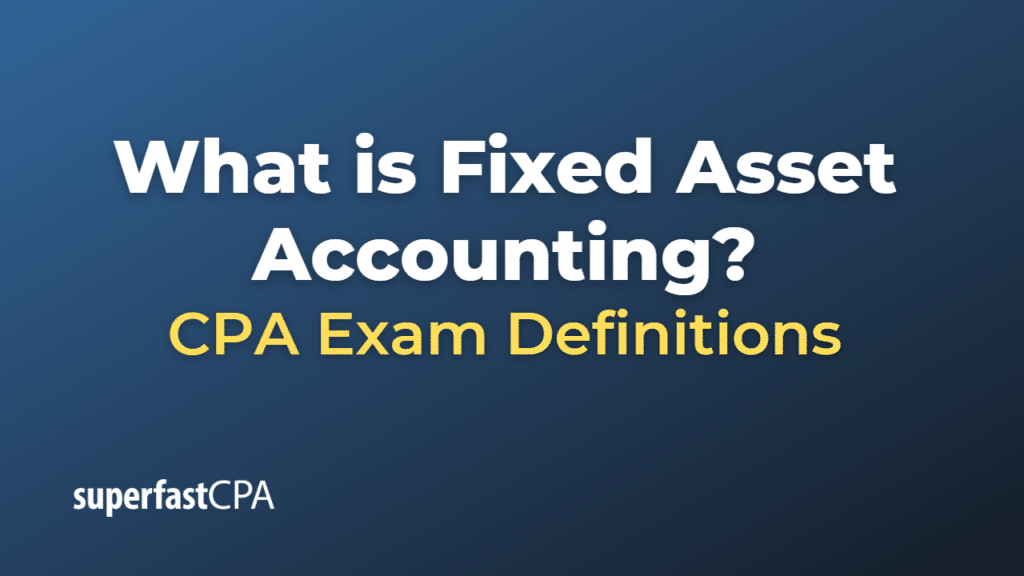Fixed Asset Accounting
Fixed asset accounting involves the tracking, depreciation, and reporting of fixed assets. As mentioned earlier, fixed assets are long-term tangible assets like property, plant, equipment, and intangible assets like patents and copyrights that a company owns and uses in its operations to generate income.
Here are the key aspects of fixed asset accounting:
- Acquisition of Assets: When a company acquires a new fixed asset, it records the asset at its original cost on the balance sheet. This cost includes not just the purchase price, but also any costs necessary to get the asset ready for use, such as installation or transportation costs.
- Depreciation: Except for land, fixed assets lose value over time due to wear and tear, aging, or obsolescence. This decrease in value is called depreciation for tangible assets and amortization for intangible assets. Accountants calculate and record this depreciation or amortization as an expense on the income statement over the asset’s useful life. On the balance sheet, the asset’s value (book value) decreases by the amount of accumulated depreciation.
- Asset Tracking: Companies maintain a fixed asset register, a detailed record of all fixed assets owned by the company. This register includes information like the description of the asset, date of acquisition, cost, accumulated depreciation, net book value, and estimated useful life.
- Disposal of Assets: When a fixed asset is sold, retired, or otherwise disposed of, the company removes the asset’s cost and accumulated depreciation from its books. Any gain or loss from the disposal (the difference between the asset’s book value at the time of disposal and the amount received from the disposal) is recorded on the income statement.
- Physical Verification: Periodically, companies perform a physical verification of fixed assets to ensure that the assets listed in the fixed asset register actually exist and are in their expected condition.
- Reporting: Fixed asset accountants prepare reports for management detailing capital expenditure, depreciation expense, and the net book value of assets. These reports help inform business decisions and are also important for external financial reporting and compliance with tax laws.
Through these activities, fixed asset accounting provides an accurate representation of a company’s investment in its fixed assets and how those assets are used and depreciated over time. It’s a crucial part of ensuring the accuracy of a company’s financial statements.
Example of Fixed Asset Accounting
Let’s use a hypothetical example to illustrate the process of fixed asset accounting.
Imagine that a small bakery business, “BakeBiz,” decides to invest in a new industrial oven to increase its production capacity. The oven costs $20,000, and they pay an additional $2,000 for shipping and installation. The oven is expected to have a useful life of 10 years, after which it will have no salvage value. Here’s how the fixed asset accounting for the oven would unfold:
- Acquisition of Asset: BakeBiz records the oven on its balance sheet as a fixed asset with a cost of $22,000 (purchase price plus shipping and installation costs).
- Depreciation: BakeBiz decides to use the straight-line method to depreciate the oven over its useful life. This means the oven’s value will decrease by $2,200 ($22,000 divided by 10) each year. This annual depreciation is recorded as an expense on the income statement, and the accumulated depreciation is deducted from the oven’s cost on the balance sheet.
- Asset Tracking: BakeBiz adds the oven to its fixed asset register, noting details such as its cost, accumulated depreciation, net book value, and estimated useful life.
- Physical Verification: Each year, someone at BakeBiz confirms that the oven is still in use and in good condition to align the physical count with the record in the fixed asset register.
- Disposal of Asset: After 10 years, the oven has been fully depreciated (its book value is now $0). BakeBiz decides to sell the old oven for $500. Since the oven’s book value was $0, the entire amount received from the sale is recorded as a gain on the income statement.
- Reporting: Throughout this process, the accountant at BakeBiz prepares regular reports on the company’s fixed assets. These reports inform management about the company’s capital expenditures, the impact of depreciation on the company’s profits, and the net book value of its assets.
Through these steps, fixed asset accounting allows BakeBiz to accurately track and report the value of its oven over time, reflecting its investment and usage of the oven in its financial statements.













